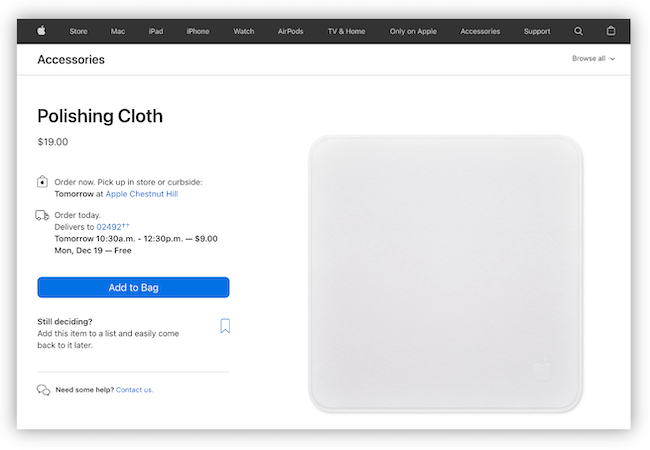An experiment was conducted for wine tasters sometime ago. The volunteers received two bottles of wine and were told to describe the taste of each one. Bottle A came with a price tag of $5, while the other bottle had a price tag of $45.
While both bottles had the same exact wine in them, most volunteers claimed the costly wine tasted better than the cheap bottle.
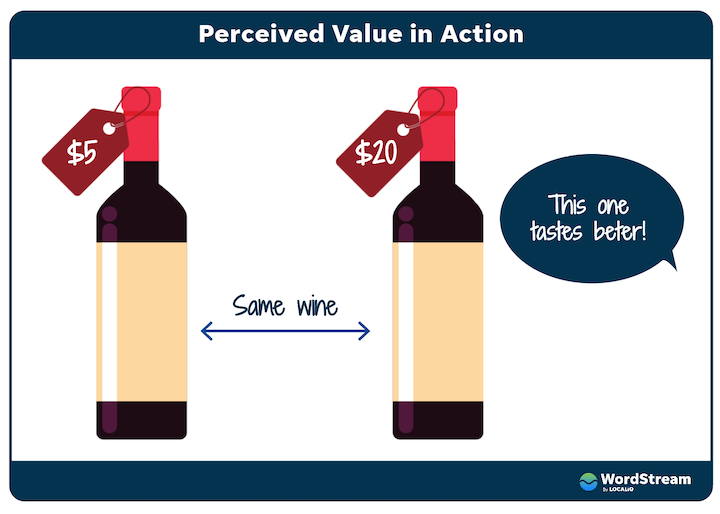
This is perceived value in action! So how does it all work and how can you improve the perceived value of your product or service? Read on to find out.
What is customer perceived value in marketing?
Perceived value is a customer’s view or appraisal of a product or service based on their perception of its costs and benefits. This includes whether it meets (or will meet) their needs and expectations, how it compares to competitors, and its quality.
Studies have shown that our brain is wired to make choices based on emotional triggers—and that includes purchasing decisions. So, rather than considering manufacturing costs when assessing whether a product or service is worth the price, they rely on subjective judgments and emotions.
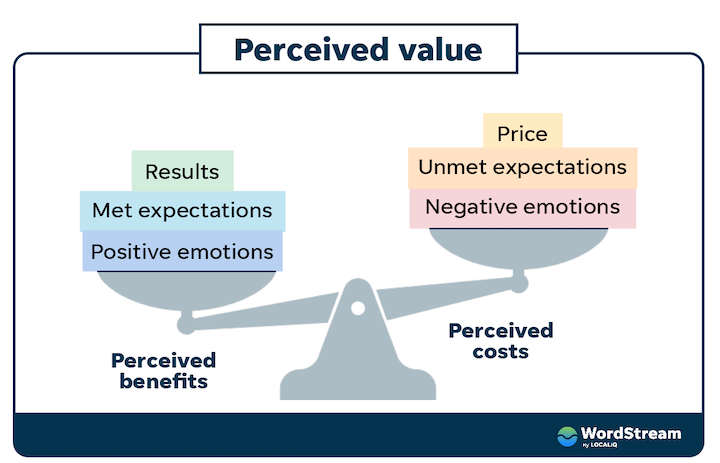
The power of customer perceived value
Leveraging the power of perception can help your business in several ways, including:
Charge higher prices
As the perceived worth of a product rises, businesses can charge a higher price or sell more units, resulting in increased revenue. For example Apple released a polishing cloth in 2021 with a $19 tag.
The New York Times referred to this pricing as “bold even by Apple’s standards, a company whose legions of loyal customers are conditioned to steep stomach prices.” Interestingly, the polishing cloth was Apple’s most back-ordered item in October 2021.
Crazy right? But that’s what the power of perception can do.
Greater customer satisfaction
Customer satisfaction is usually a function of value. When your customers perceive your products well, they’re more apt to feel their needs are being met—especially to validate their investment. Remember that you need to deliver on this value, however, so you aren’t setting them up to be disappointed in the long run.
Improve customer loyalty
By convincing purchasers that your items are more valuable than competitors, you improve your chances of developing lasting connections with them. For example, here is what PC Mag has to say about Apple’s polishing cloth.
The Apple Polishing Cloth fully demonstrates the power of the company’s branding—it doesn’t even matter that Apple’s official page on how to clean your device(Opens in a new window) suggests only that you use a “clean, damp, lint-free cloth.” So long as Apple sells a product that fits the definition, fans will buy it.
Increase demand
Of course, individuals with a favorable impression of your product are more likely to convert and spread positive word-of-mouth, resulting in greater demand.
Easy ways to increase a product’s perceived value
We have seen how perception benefits businesses. But how do we forge this perception? Here’s how to increase perceived value for your small business?
1. Create scarcity
When you indicate that a product is limited in availability, you suggest that it is either running out because it’s popular, or rare because it’s valuable.
This is one of the most prevalent methods used by ecommerce websites to induce FOMO and enhance conversions.Here are some easy and effective examples of scarcity copy:
- 20% discount ends in two days
- Out of stock / only X left in stock
- Limited to x per buyer
- Your item is kept in a basket for 15 minutes
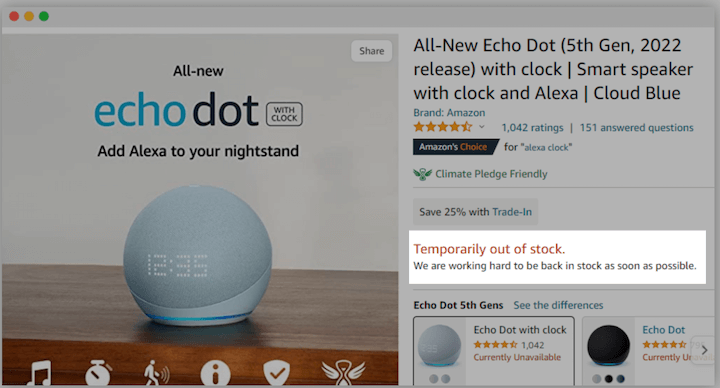
2. Increase the price
As you saw in the wine-tasting experiment, and as other studies show, consumers often associate a higher price with more value. Social psychologist Robert Cialdini explains that customers tend to substitute price for quality, especially when they’re unfamiliar with a product.
Just stay practical about it—you do not want to charge $19 for a cleaning cloth like Apple. Experiment with your product pricing strategy and find that sweet spot.
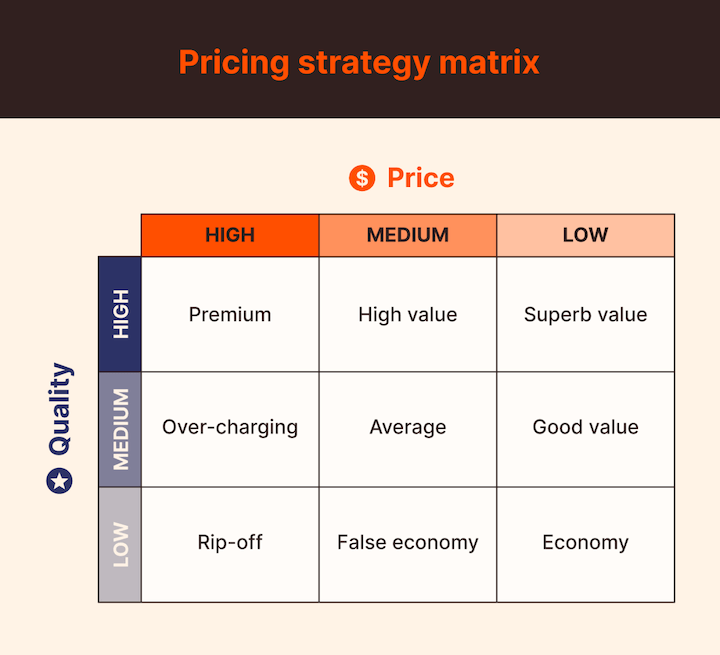
3. Show markdowns
Another technique to increase customer perceived value is to show that your product is worth more than the given price. For example, you could:
- Provide the original price if you’re running a sale or bundle discount
- Indicate other savings or gains the customer can get, such as time and resources and what those are valued at.
The New York Times does this below by showing that you aren’t paying for a dollar’s worth of news per week, but rather, $4.25 worth of news, but only for $1.

Many consumers are used to seeing deals like this on online shopping sites. Just make sure you stay honest and don’t overexaggerate, otherwise you could give off the impression of being a sleazy infomercial if you are not cautious.
4. Use charm pricing
Notice how almost all of the prices you see end in “99”? For instance, if something costs $5, they display $4.99 as opposed to $5, or $999 as opposed to $1000.
This tactical pricing strategy is called “charm pricing” and according to the Journal of Consumer Research and this MIT study, consumers perceive “odd prices” to be cheaper than they really are.
The online sales platform Gumroad tested this and discovered that it greatly increased their conversion rates. Here are the results of the experiment:

5. Include high-quality visuals
One issue online shoppers face is not being able to physically touch a product to confirm its authenticity or assess its quality. This means you need to use high-quality visuals that demonstrate its best features and benefits. Bellroy does a great job with this on its site with a slider bar that allows you to compare wallet sizes based on number of credit cards you’re using.
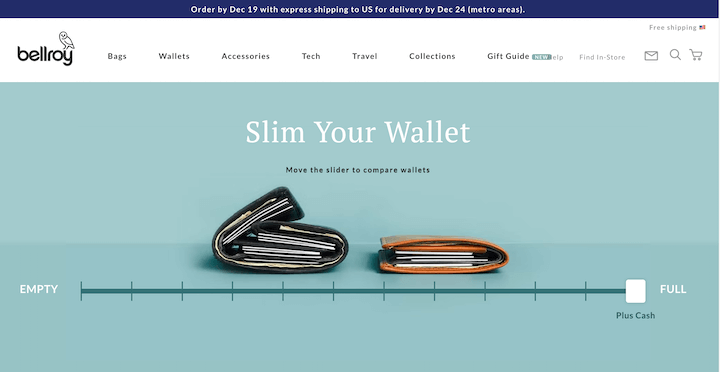
6. Display customer testimonials and reviews
Prospective customers are eager to learn what existing customers think of a product or service. In fact, 93% of people are influenced by online reviews, and online product reviews are trusted 12x more than a manufacturers’ description. This makes it crucial to include customer testimonials and reviews on your website and social media channels.
Not only will they improve your perceived value, but they’ll also ease anxieties of potential customers, set you apart from competitors, and build your credibility and trust.
7. Offer top-notch customer support…
Not only do businesses that provide memorable client experiences get word-of-mouth recommendations, excellent internet evaluations, and greater customer retention rates, but also, customers are willing to pay more for a better experience and support.
Personalized support raises the perceived value of your products and services.
Here are some customer support ideas to improve product value:
- Provide a premium community for your customers
- Offer a periodic live meetings with customers
- One-on-one consultations and meetings with clients
8. …and a seamless user experience
Speaking of customer experience, customers should have a good experience in all their interactions with all of your digital assets. Make sure you optimize
- Fast page speed
- A quality experience free of annoying popups
- Mobile functionality
- Accessibility
- Attractive design
- A variety of payment methods
- An easy checkout process
9. Leverage influencers
Getting someone your audience knows and trusts to endorse your product or service can make a big difference in your perceived value. You do not have to spend a fortune on celebrity endorsements. Simply find industry influencers in your niche and use our tips for influencer collaboration and outreach.
10. Pay close attention to your branding
The importance of branding in customer perception cannot be overemphasized. Regardless of how excellent your goods or services are, your clients may overlook the actual value you deliver if your branding and design are off.
To use branding to your advantage, make sure you have a consistent and attractive brand identity across all of your assets, both digital and physical. This includes your website, social channels, emails, packaging, swag, signage, and more.
Daily Harvest is an ecommerce company that combines proper branding and gorgeous product graphics to sell nutritious smoothies.
11. Offer free trials and samples
No one has as clear an understanding of your product as you, and not everyone will read through its features or benefits.
Instead of telling prospects how fantastic your service is, allow them to experience the it themselves by providing free trials and samples. Regardless of whether they use it, the mere offer demonstrates confidence which can improve its perceived worth.
As part of their client acquisition strategy, several B2B SaaS providers provide free plans and short-term trials, enhancing their products’ perceived value.
12. Be socially responsible
One way to appeal to emotions to improve your customers’ perception of your brand and product is to use social responsibility.
Studies show that customers are prepared to pay extra for items made by socially responsible enterprises. Humans are a cooperative species by nature. We feels good when we do acts of kindness for others, but we feel even better when we earn something while doing it.
Consider donating a portion of your proceeds to a cause you care about or giving back to the communities of which you are a part.
People love buying from such firms, and it boosts their perceived worth.
13. Know what matters to your audience
Even if your product is the best on the market, it’s not going to matter if it doesn’t resonate with your customers. You need to be aware of the emotional factors that motivate them, the benefits they seek and the problems they’re looking to avoid.
Your value proposition needs to come from an intricate understanding of yoru target audience and buyer personas.
Wrap up
If there is anything to take away from this piece, it should be that customer perception is crucial for business success. Your customers are the engine that propels your business forward, and they want to know that their time and money are well spent. So put this need at the center of all your marketing efforts, follow the tips in this post, and you will increase the perceived value of your goods and services.
- Introduce scarcity
- Increase the price
- Show markdowns
- Use charm pricing
- Include high-quality visuals
- Display customer testimonials and reviews
- Offer top-notch customer support…
- …and a seamless user experience
- Leverage influencers
- Pay close attention to your branding
- Offer free trials and samples
- Be socially responsible
- Know what matters to your audience
About the author
Bhujal Patel is a marketer and SEO, passionate about helping businesses get more revenue and profit through customized strategies. He lives in Toronto and writes about business ideas and scaling organic growth at mydigitalkube.com.

